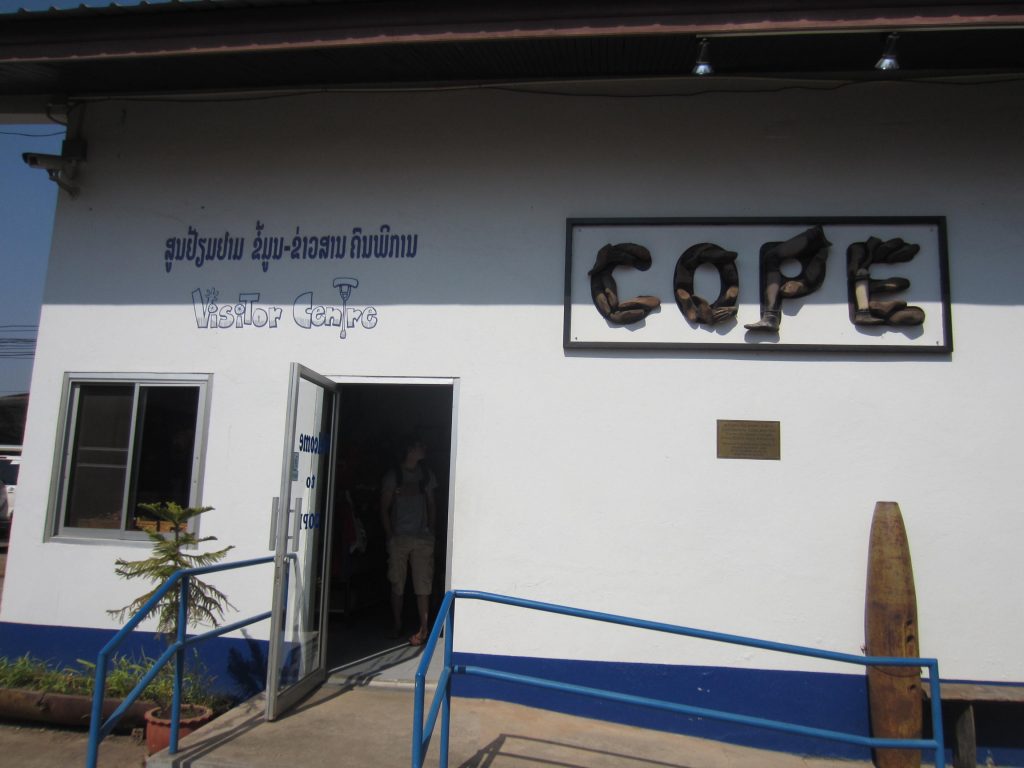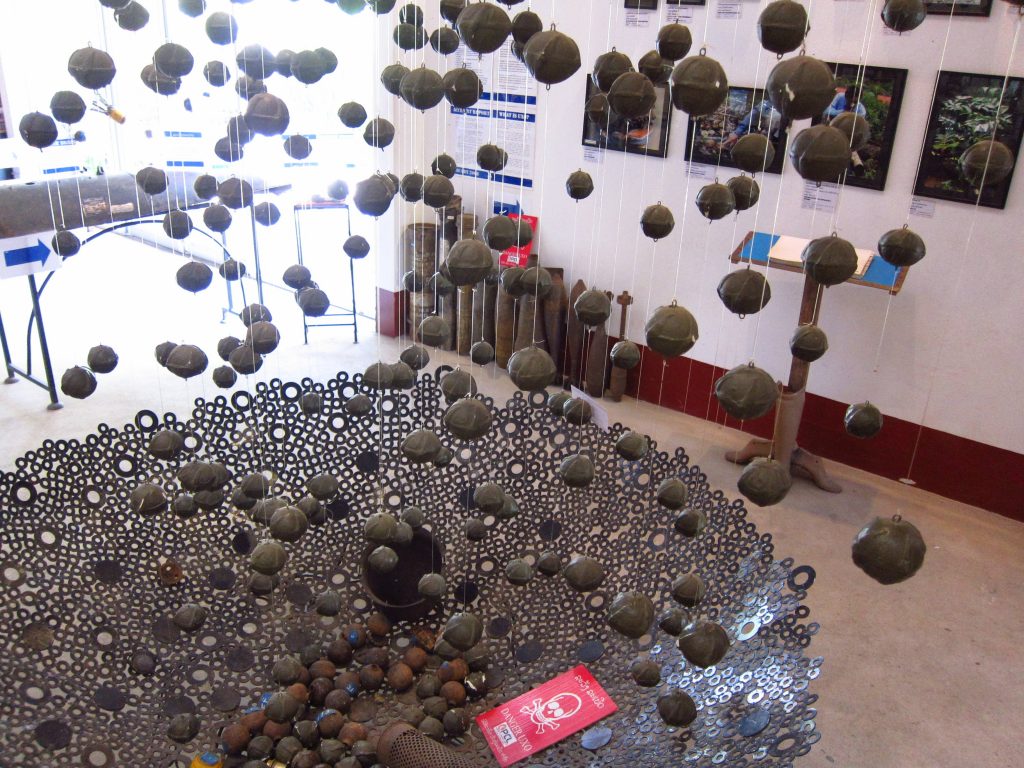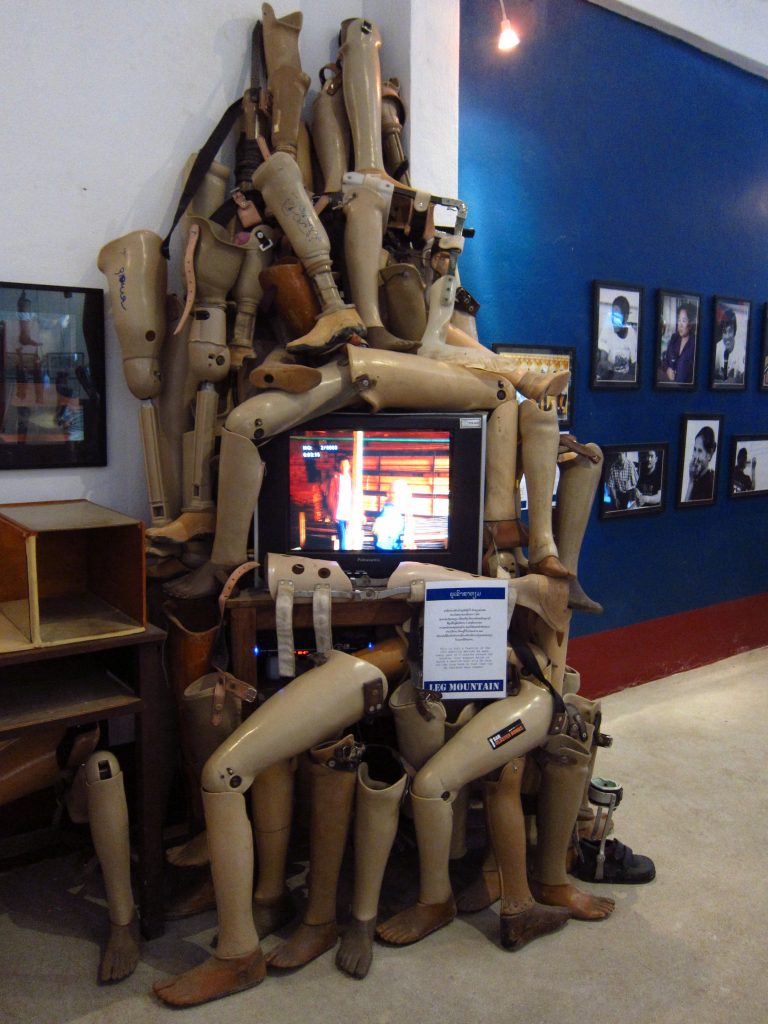Before I visited Laos, I knew little about the country and its history. My sister had recommended I go for its natural beauty and laid-back tourist atmosphere. While visiting the capital city, Vientiane, I passed by a few humble buildings, tucked away from the roadside: the COPE Center. Intrigued, I paid a visit.

The COPE Center provides prosthetic limbs and rehabilitation programs for people maimed (and the families of those killed) by UXOs (unexploded ordinances). The Visitor Center presents material about the bombing campaigns that were waged against Laos, as well as Cambodia and Vietnam, during what Americans call “the Vietnam War.” Estimates are around twice as many bombs were dropped on those countries between 1955 and 1975 than were dropped during all of World War II. The Visitor Center also presents current efforts to clear UXOs in Laos.

Decades after the bombs fell, their effects remain devastating. After being dropped from planes, large bombshells were set to open mid-air, releasing dozens of smaller cluster bombs (about the size of softballs), known as “bombies”. At the Center, I learned that today, both the larger bombs and their smaller bombies lay unexploded in 87,000 square kilometers of Laos, or about one-third of the country. Only forty square kilometers can be cleared of UXOs each year.
The Center displays some of the prosthetics it provides to maimed survivors of UXOs. Prosthetics for missing hands are designed to help someone complete a particular task, including separate extensions with a toothbrush or a spoon for example. These basic prosthetics are far simpler than the advanced, sometimes robotic, ones attainable by citizens in advanced industrialized nations.
The Center also presents pictures and videos of the individuals it serves. It upset me to hear stories of farmers and their families affected by UXOs, living in simple rural huts. These families now needed to both care for an injured family member and continue to farm manually.
Laos is a developing country. Much of it is rural, with some areas cultivated as farmland. Many farmers merely subsist and feel compelled to further develop nearby land to survive. Poverty, then, drives Laotian farmers into developing uncleared (or contaminated) areas. Also because of poverty, people who find such UXOs might try to retrieve and take the bombs themselves (rather than calling on disposal teams) to sell the shells. The value of the shells can be far more than what a farmer typically makes in weeks. Finally, unexploded bombies can be found by children who may not understand what they are, who might want to play with them, and who might not tell their parents what they have found for fear of having to give up their new treasure.

President Barack Obama and Secretary of State Hillary Clinton have visited the COPE Center. USAID is one of the Center’s several funders. But a horrific lesson I took from the Center is that it exists because of everyday, avoidable tragedies that the Center can only address after the fact. Indiscriminate bombing campaigns left behind bombs ready to detonate, and the countries which dropped those bombs seem to feel only limited responsibility to remove those UXOs.
The COPE Visitor Center demonstrates the organization’s efforts to help Laotian victims of bombs dropped decades ago that still lie in wait. Instead of presenting righteous anger toward those whose attacks are still maiming and killing Laotians today, the Center’s simple slogan is “helping people move on.”
Individuals maimed (and their families) can need life-long assistance. To donate to COPE, visit: http://copelaos.org/donate/.
Kurt Borchard is a Professor of Sociology at the University of Nebraska Kearney. He was a participant in the 2019 CHGS summer workshop for teachers. He teaches an undergraduate course on the Holocaust and has written extensively on cultural studies and homelessness.

Comments